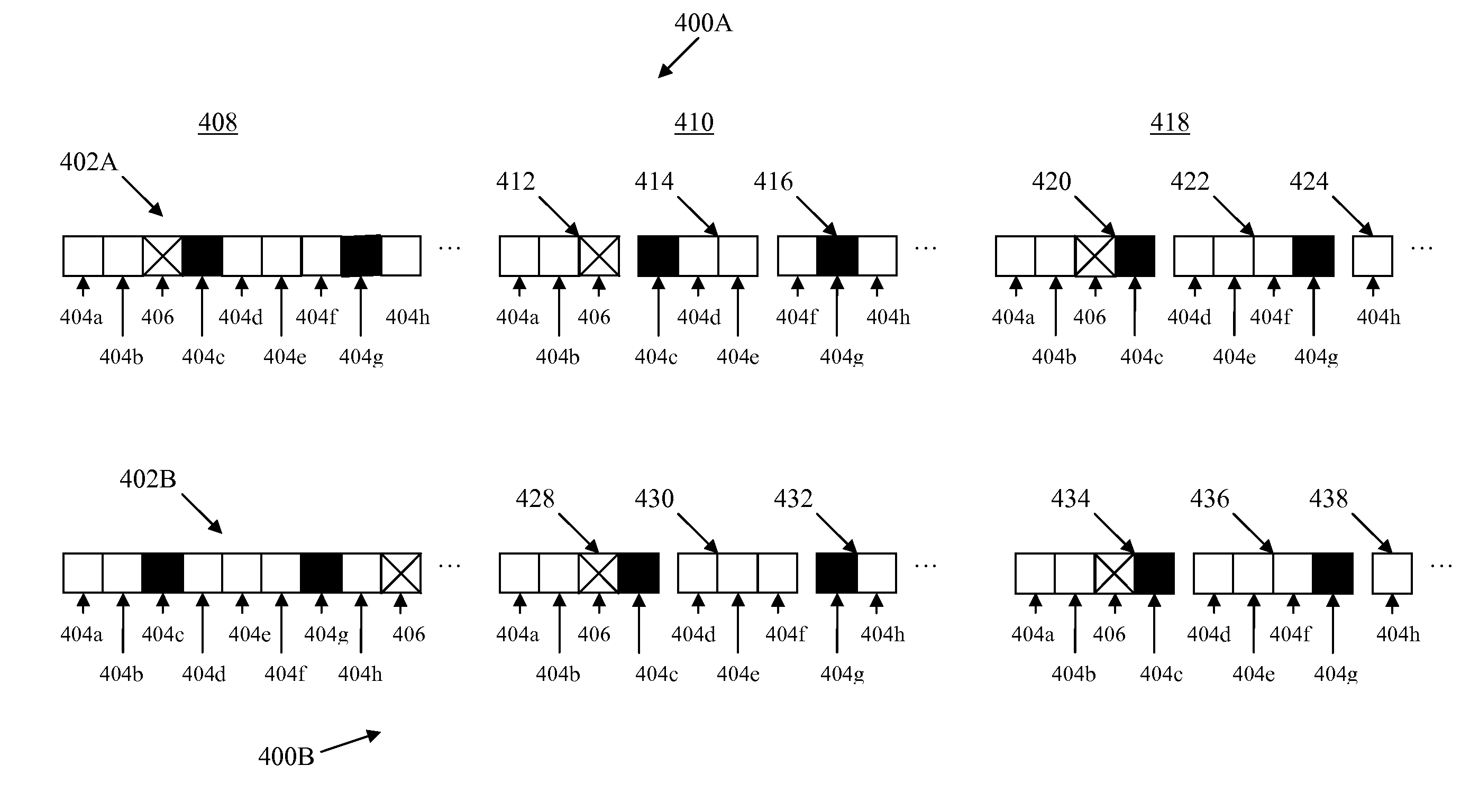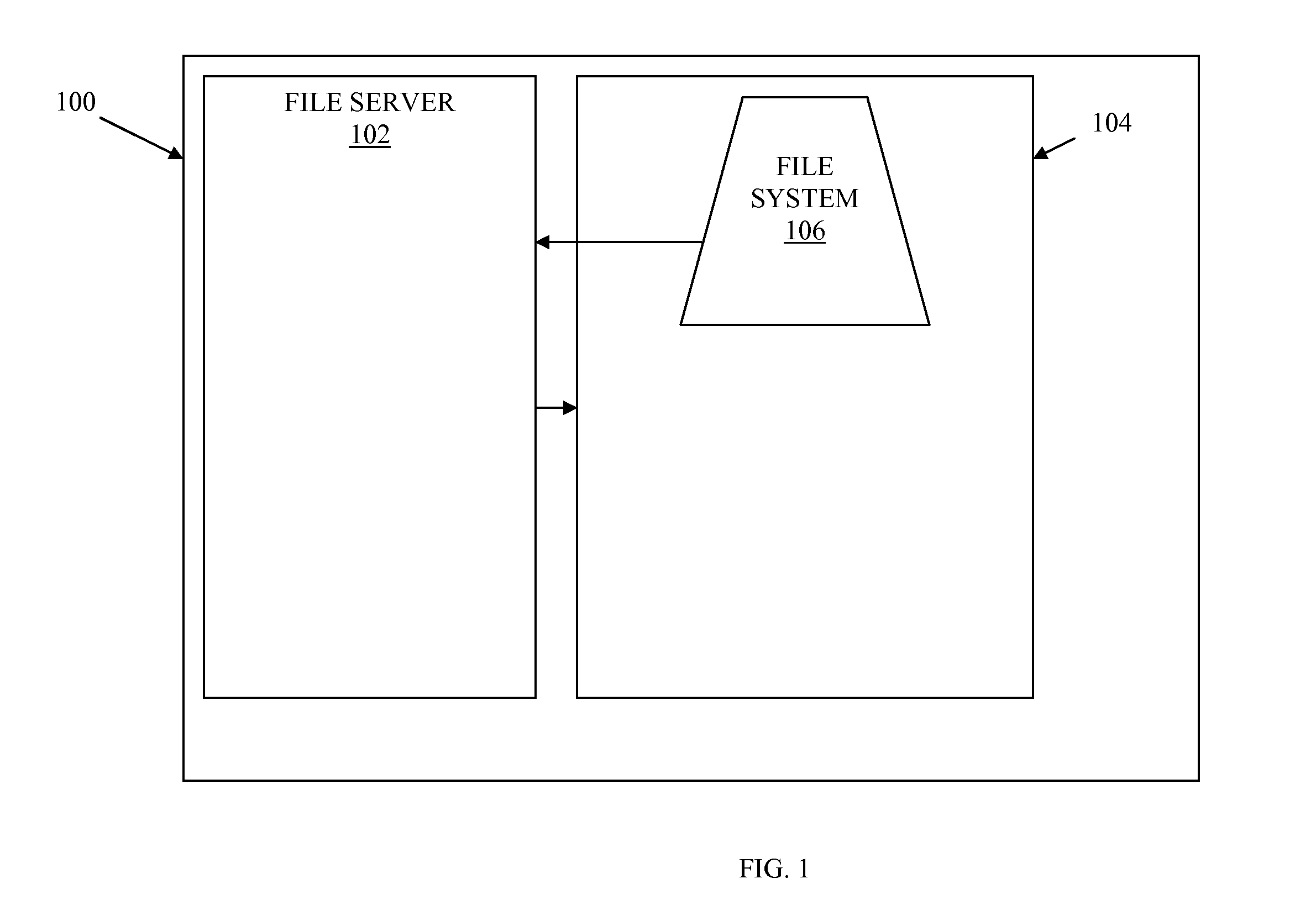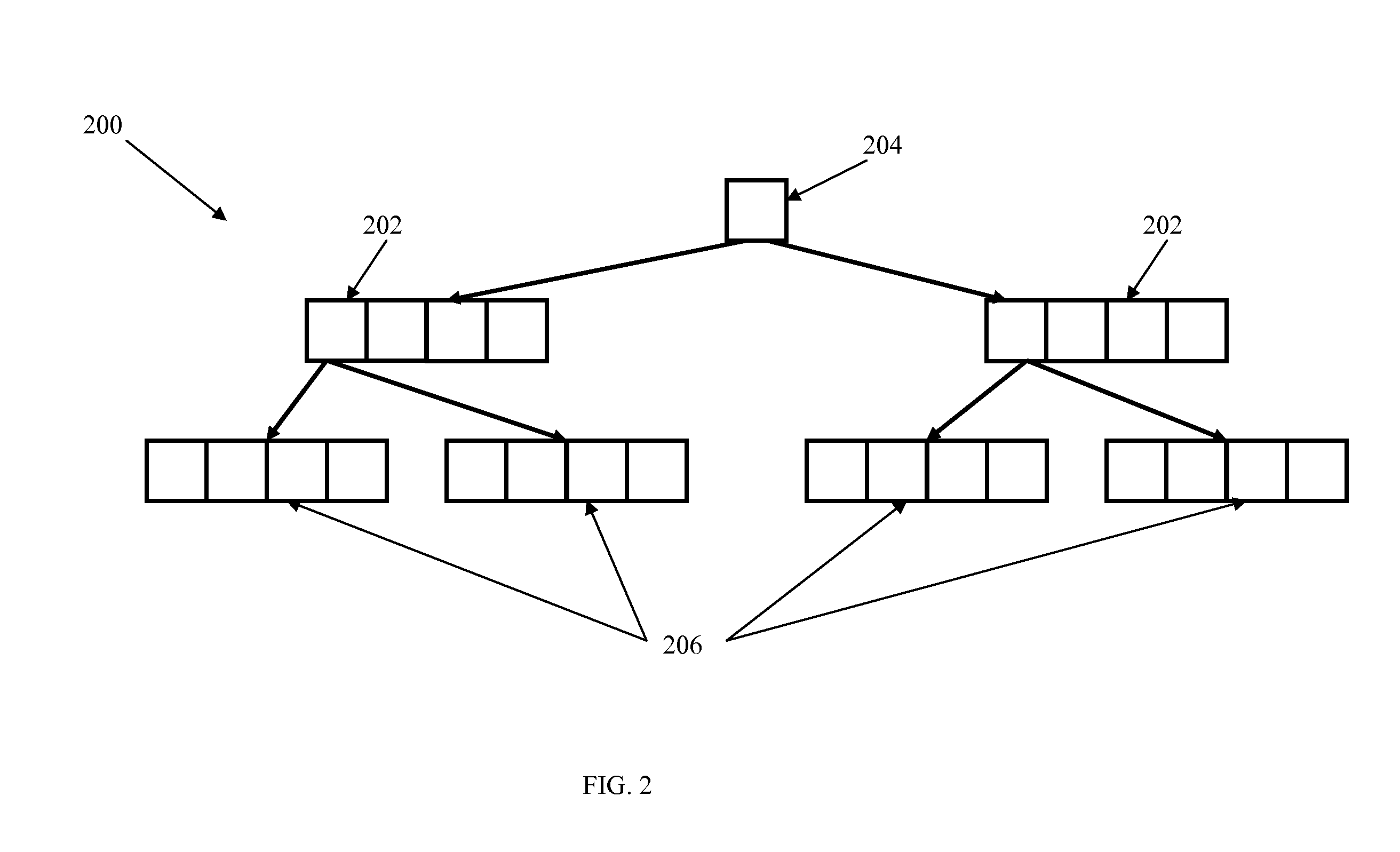Methods and Apparatus for Content-Defined Node Splitting
a content-defined node and node technology, applied in the field of node splitting in data structures, can solve the problems of increasing storage costs, prohibitively expensive in time or storage resources, and affecting the order of conten
- Summary
- Abstract
- Description
- Claims
- Application Information
AI Technical Summary
Problems solved by technology
Method used
Image
Examples
Embodiment Construction
[0017]Content addressable storage (CAS) systems store information that can be retrieved based on content instead of location. FIG. 1 is a diagram of a storage system 100. In at least one embodiment of the present invention, the methods of node splitting described herein are performed in a storage system such as storage system 100. Implementation of such a storage systems is described in further detail in related U.S. patent application Ser. No. 12 / 042,777, entitled “System and Method for Content Addressable Storage”, filed Mar. 5, 2008 and incorporated by reference herein.
[0018]Storage system 100 comprises a file server 102 for receiving data operations (e.g., file writes, file reads, etc.) and metadata operations (e.g., file remove, etc.), chunking the received data into data blocks to be stored in block store 104. Block store 104 stores data and metadata blocks, some of which might point to other blocks, and which can be organized to describe a file system 106, described in furthe...
PUM
 Login to View More
Login to View More Abstract
Description
Claims
Application Information
 Login to View More
Login to View More - R&D
- Intellectual Property
- Life Sciences
- Materials
- Tech Scout
- Unparalleled Data Quality
- Higher Quality Content
- 60% Fewer Hallucinations
Browse by: Latest US Patents, China's latest patents, Technical Efficacy Thesaurus, Application Domain, Technology Topic, Popular Technical Reports.
© 2025 PatSnap. All rights reserved.Legal|Privacy policy|Modern Slavery Act Transparency Statement|Sitemap|About US| Contact US: help@patsnap.com



